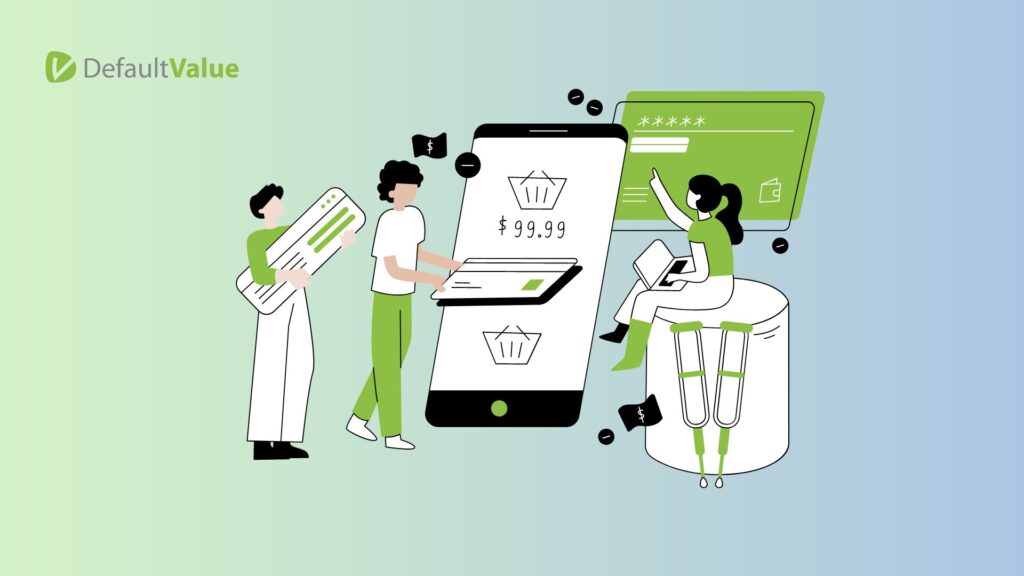Live Commerce: A Trend Or A Temporary Whim Of The Industry?
Strange as it may seem, not everyone knows about streaming or “live” online sales. At the same time, experts and market analysts predict a bright future for live commerce, to the point that the new phenomenon will eventually replace many other ways of purchasing over the Internet.
Live commerce is a way of online shopping that combines the direct inclusion of a seller, blogger, or influencer, with the ability to purchase a streamed live product instantly. For example, while watching a cooking video, you can immediately purchase all the necessary ingredients.
Anyone who first hears about live commerce immediately associates it with infomercials, which originated in the 1970s and 1980s in the U.S. and spread around the world. But live commerce is not telemarketers 2.0.
Now more than ever, it is important to retain the audience, so the presenter must be able not only to sell but also to entertain. Streaming is not a monologue, but a show, during which the streamer answers incoming questions about the product. Users see not just a picture but an interactive product card with elements stimulating a purchase.
The effectiveness of the format is hardly in doubt. Before the 11.11.2021 sale, Chinese blogger Austin Li Jiaqi sold $1.7 billion worth of merchandise in 12 hours of streaming, and the stream received 250 million views. But what is livestream shopping—a short-term trend that’s peaking or something more? Let’s look into it.
Live commerce implementation worldwide
As expected, the trendsetters were the Chinese. Three of the five largest e-commerce sites are currently located in China. Live commerce was first used on TaoBao back in 2016. Today, this format sells almost everything in China—cosmetics, perfumes, clothing, and even farm supplies or cars.
Taobao Live has become the market leader in live commerce, accounting for 80% of China’s streaming. The platform has spawned many streamer bloggers. Sometimes live events are held together with celebrities. For example, blogger Viya and Kim Kardashian sold 15,000 bottles of perfume in several minutes in 2019. Now there are about 9,000 companies in the Chinese market that work in live commerce.

In the U.S., the leader in streaming is Amazon, which launched the Amazon Influencer program back in 2017, with live sales a little later. The company also has an Amazon Live service, where bloggers can showcase products and receive a commission on units sold.
In December 2020, 10 bloggers on TikTok sold Walmart products—viewers could place an order directly on the app during the broadcast. The event attracted 7 times more viewers than planned and helped increase the number of TikTok subscribers by 25 percent. Gradually, commerce has been integrated into social networks like Facebook and Instagram. YouTube planned to introduce a shoppable stream feature in 2022.
A successful case that even garnered professional awards at The Drum Awards for Content 2021 was the creation by Pringles, together with the Twitch platform, of a zombie cowboy who eats chips. The “walking dead” broadcast became the most-watched stream in the UK. After this collaboration, Pringles’ share of customers increased by almost 14%.
Future prospects for the format

TaoBao CEO Jiang Fan believes that livestream shopping will not only be relevant in the future but will become the main sales model. Forecasts also hint at this.
According to Statista, the video streaming market will reach $82.43bn in 2022, and the number of users will reach 1,486.8m by 2026.
For example, China had 617 million online users at the end of 2020, representing 62.4 percent of the country’s total internet users. Meanwhile, the live e-commerce audience reached 388 million, 123 million more than in March of the same year, accounting for 39.2% of China’s total users. It is also worth mentioning that 66.2% of customers place orders after watching live e-commerce videos.
Who should develop live commerce and on what platforms
One of the main questions retailers are concerned about today: who is suitable for this promotion format. Experts believe it can be used by both large and small brands, although there are certain nuances.
Large businesses have more streaming opportunities—they can use any live commerce platforms to attract popular bloggers or stars. For small companies, it makes more sense to use social networks and marketplaces, and the project owner can act as a presenter. The main thing is that the brand has something to say and is not afraid to show the underside of the business and lose control of the situation.
Website or app for the online store
It is difficult for a retailer to launch live commerce independently—it takes much time and is expensive. It is more profitable to work with contractors—you can integrate with a streaming platform in 1 day instead of several months, and this is dozens of times cheaper than coding by yourself. The site interface provides everything you need to increase sales—in front of the buyer’s eyes is a card, and under the finger—the button “Buy,” you can move the discussed product in the foreground.
But even in this case, it is important to understand that live commerce is not a magic pill but a marketing tool that must be used competently, and have the resources to develop. It is important to study the audience, adapt the streams for it, and hold them regularly. Streaming should become an element of a well-thought-out sales funnel. Your streams should be saved in the product card because they contain useful content.
The main advantage of promoting on your site is that there is no need to adjust to the marketplace terms, and you can contact users independently. Research shows that users spend 20% more time in applications with live streaming.
Marketplaces
Marketplaces have a strong position concerning live commerce. The main advantages are:
A large audience (tens and hundreds of thousands of people). Low cost of attracting traffic. Ample opportunities to motivate streamers and buyers.
The functionality of marketplaces allows you to host streams, communicate with viewers, and analyze sales in real time. The entry threshold for streaming on marketplaces is minimal—you can stream from your phone and show products anywhere.
The disadvantages are that the format is not yet too well promoted, with only a hundred or two people watching some of the streams. But records of broadcasts become part of product cards, and the video in the card increases conversion by more than 20%. You can post live recordings on your site.
Any seller can start a live stream, but you have to request the support of the marketplace to gain an audience. Customers can find out about the broadcast a day before it happens; information about that appears on the main page. Customers also get a push before the broadcast of interest begins.
Social media and platforms
All social media platforms—YouTube, Facebook, Twitter, TikTok, Instagram—are moving toward live commerce. While shopping on social networks is not as convenient—you can review the product and chat with the blogger, but you have to go to personal messages or the website to order.
In the near future, social networks are planning to add shopping functionality so that they can be made from video. Cues and links will appear during the broadcast, and all video content will be tagged.
Having studied experts’ opinions, cases, statistics, and assumptions, we concluded that live commerce is a new stage of e-commerce evolution that will be with us for a long time. What do you think?
Principles of life commerce in an online store

In recent years, online shopping has revolutionized the way we shop. With the introduction of Live Commerce, a new era of online shopping has begun. Live Commerce refers to the process of selling products through live-streaming video content. The concept has been gaining immense popularity among online shoppers as it offers a more interactive and engaging shopping experience.
Live Commerce platforms provide a seamless shopping experience, allowing customers to see the product in action, ask questions, and get immediate feedback from the sellers. This is a game-changer for online retailers who were previously limited to static product images and descriptions.
The principles of Life Commerce in online stores involve using live-streaming video content to showcase products, explain their features and benefits, and answer customers’ questions in real-time. This requires web developers to create a user-friendly and reliable platform that supports live streaming and can handle high traffic.
Live Commerce in web development has become a buzzword among web developers, who are now developing platforms that can support live-streaming eCommerce. Such platforms require integration with payment gateways, customer management systems, and shipping solutions to provide a seamless shopping experience.
Live Commerce platforms are also transforming the way businesses market their products. It offers a more personalized shopping experience by providing customers with a chance to interact with the sellers directly. This helps businesses build trust with their customers and foster brand loyalty.
In conclusion, Live Commerce is the future of online shopping. It offers a new level of interaction, engagement, and trust between businesses and customers. With the principles of Life Commerce in online stores, web developers can create platforms that support live-streaming eCommerce, providing customers with a seamless and personalized shopping experience. So, if you’re an online retailer, it’s time to embrace Live Commerce and take your business to the next level.
What benefits can live commerce give to your online store?
First and foremost, Live Commerce can increase customer engagement. By providing a more interactive shopping experience, customers are more likely to spend time browsing and learning about your products. Live Commerce allows customers to ask questions in real-time, receive immediate feedback from sellers, and even participate in live demonstrations of products. This level of engagement can lead to increased customer satisfaction, loyalty, and, ultimately, higher sales.
Live Commerce can also help businesses build trust with their customers. By showcasing products through live streaming video content, businesses can demonstrate the quality and authenticity of their products. This can help alleviate any doubts or concerns that customers may have about purchasing products online. Live Commerce platforms also allow customers to see the product in action, giving them a better understanding of its features and benefits.
Another benefit of Live Commerce is that it can help businesses stand out from their competitors. With so many online stores competing for customer attention, businesses need to find ways to differentiate themselves. Live Commerce can provide a unique and memorable shopping experience that sets your online store apart from others.
Lastly, Live Commerce can increase sales. By providing customers with an engaging and interactive shopping experience, businesses can increase the likelihood of customers making a purchase. Live Commerce platforms also make it easy for customers to make purchases directly from the live stream, making the buying process quick and convenient.
In conclusion, Live Commerce is a game-changer for online retailers. By providing a more engaging and interactive shopping experience, businesses can increase customer engagement, build trust, stand out from competitors, and ultimately increase sales. If you haven’t already, it’s time to consider incorporating Live Commerce into your online store.
Conclusion
In conclusion, Live Commerce is much more than just a temporary trend in the e-commerce industry. It has quickly become a popular way for businesses to connect with their customers and offer a more engaging shopping experience. Live Commerce in web development has opened up new possibilities for businesses to showcase their products and build trust with their customers. By providing a more interactive shopping experience, businesses can increase customer engagement, stand out from competitors, and ultimately increase sales.
Live Commerce platforms are constantly evolving, with new features and capabilities being added to enhance the shopping experience. As technology continues to advance, we can expect Live Commerce to become even more prevalent in the e-commerce industry. It’s clear that Live Commerce is not just a passing fad but rather a valuable tool for businesses to connect with their customers and succeed in the ever-evolving world of e-commerce.
Default Value can play a crucial role in implementing emerging eCommerce trends by providing flexible and scalable solutions that can adapt to changing consumer behaviors and preferences. With the rise of live commerce, businesses need to have platforms that support live-streaming eCommerce. Default Value can help businesses build and customize their online stores with the latest features and capabilities. Additionally, Default Value can assist in integrating payment gateways, customer management systems, and shipping solutions to provide a seamless shopping experience. By working with Default Value, businesses can stay ahead of the curve in implementing emerging eCommerce trends and position themselves for success in the ever-changing world of online retail.




